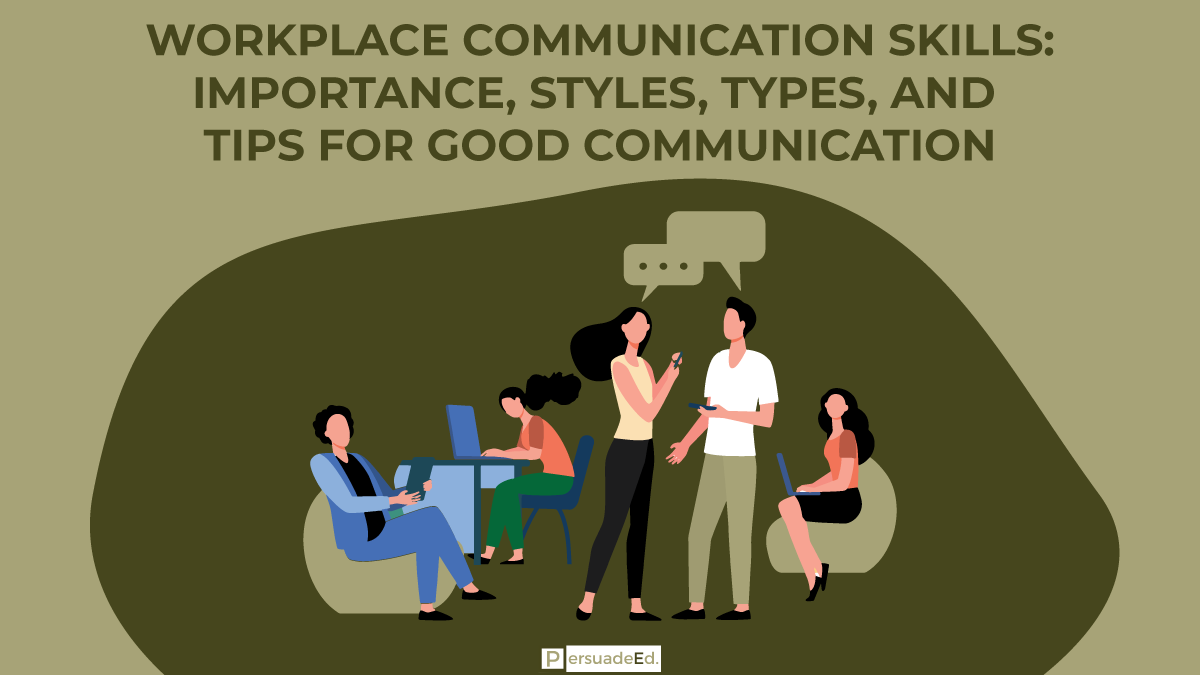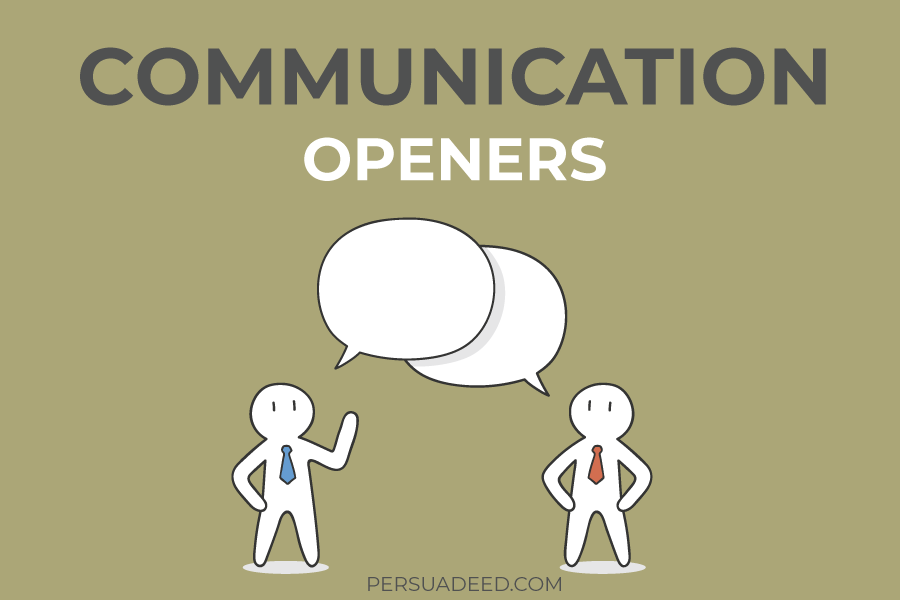Communication is sending or receiving information between two or more people through a particular medium. If a person is talking and another person is listening, you have a lecture, not a conversation. The conversation is reciprocal and mutual. A conversationalist is a person who likes to talk with an extensive personal and professional network.
People communicate in different ways, interacting and exchanging information in different ways depending on who they are.
In communication, there are four types: passive, aggressive, passive-aggressive, and assertive.
Each individual uses a different communication style for a variety of reasons. It has been found that the assertive communication style is the most effective since it incorporates the best features of all the other styles.
We will get a better understanding of this by breaking down the styles, standard phrases, and what makes each of them unique.
You can create a dynamic, positive work environment by learning about them and putting them to use in your organization.
Your organization will benefit from this by improving communication, enhancing hiring and training, and enhancing many other processes.
Passive Communication Style
An individual who uses passive communication avoids expressing their opinions or feelings, protects their rights, and identifies and meets their needs. The result of this tendency is that passive individuals do not express their anger overtly. It is often unaware that grievances and annoyances are mounting until they are unbearably exacerbated. They are prone to explosive outbursts once they reach the point where they are no longer tolerant of unacceptable behavior, which is usually out of proportion to the triggering event. Often, they are ashamed, guilty, or confused after the outburst, so they become passive once again.
The following behaviors can help you identify a passive communicator:
- Makes it difficult to make eye contact
- Having trouble saying no
- An attitude of going with the flow
- Posture that needs improvement
The following phrases are examples of passive communication:
- I don’t think it matters that much.”
- “I am just trying to get along with everyone.”
Aggressive Communication Style
Communication in this style may be hostile, threatening, and driven by a desire to win at all costs.
Communicators who are aggressive display a sense that they are more important than anyone else in the discussion, and the content of their message is often overshadowed by their tone.
People who experience this type of communication might feel belittled, intimidated, and steamrolled.
In certain situations, people may react by pushing back against aggressive communicators, not because the communicator’s message is incorrect but simply because they are so unpleasantly surprised by how it is delivered.
It has been observed that some business leaders behave in this way, using their style in such a way as to appear confident rather than domineering, but this requires skill.
It is advised that this style is avoided in day-to-day operations because it does not endear one to their colleagues.
People who are aggressively communicative often:
- Trying to dominate others
- Control others by humiliating them
- Accuse, blame, or criticize others
- Have a very impulsive nature
- I have a low tolerance for frustration
- Use a loud, demanding, and overbearing voice
- Become threatening and rude
- Listening skills are lacking
- Frequent interruptions
- Pose in an intimidating or overbearing manner
Passive-Aggressive Communicators
Users of passive-aggressive communication styles may initially appear passive but may feel trapped or powerless on the inside, causing them to resent others or act out in subtle, indirect, or hidden ways.
Rather than confront a person or issue, passive-aggressive communicators mutter to themselves. They cannot acknowledge their anger, express their feelings in facial expressions that do not match their feelings and even deny that there are problems.
Communication by passive-aggressive people is characterized by body language, poor communication with others or sabotaging others’ efforts, such as giving people the silent treatment, spreading rumors behind people’s backs, or letting others down. Communicators who are passive-aggressive appear cooperative but silently act differently.
The passive-aggressive communicator is aware of his or her needs but sometimes struggles to express them.
What might cause someone to use a passive-aggressive communication style?
When people passive-aggress, they are worried about what others will think about their opinion on the topic. Disagreements are avoided by doing them discretely rather than openly.
The communication style described here is ineffective. Why is that?
The issue of passive-aggression comes up because it circumvents the issue. When people don’t openly express their ideas, it wastes everyone’s time. Clarity is a key-value when communicating.
When you hear people say things like this, ask them how they feel or figure out how they are feeling on the aggressive end of the comment. Communicate with confidence regardless of how you feel, even if you disagree with someone else’s viewpoint.
Assertive Communication Style
It is believed that assertive communication is most effective. An assertive communicator can express their honest thoughts in a polite and respectful way that takes into consideration other people’s opinions and feelings. As assertive communication is defined Express directly, honestly, and appropriately, what you think, feel, need, or want.
You are responsible for yourself and respectful of others. Listening and solving problems are skills you possess. As long as you do not violate others’ rights, you stick up for yourself.”
In assertive communication, assertive speakers speak in a calm voice while making eye contact that doesn’t appear overwhelming.
Which are the reasons why you should communicate assertively?
In assertive communication, individuals feel safe to express their feelings because the environment is equal and two-way. Transparency encourages stronger working relationships because of this type of communication. In addition to asking their colleagues for feedback, assertive communicators are comfortable providing feedback to several team members simultaneously. Continual improvement and growth are fostered in this way.
Here are some tips for being assertive
Communicating assertively means expressing your ideas without sacrificing politeness. The perfect style is unattainable for everyone, but for some, it comes naturally. The following tips will help you become an assertive communicator:
Keep honesty as a priority
You need to be honest when you communicate assertively. Whenever you share or respond to other people’s thoughts. When you disagree with someone, you often feel compelled to avoid the issue, but it is better to be kind and disagree rather than agree with an idea you do not believe.
Listen with an open mind
Empathy is a key component of assertiveness, as is understanding the point of view of the other person. This can only be accomplished by listening. Make sure your ears are open and that your mouth is closed when someone is talking to you.
Differing opinions
Generally, it is perfectly okay to agree to disagree if you have done all you can to understand another person’s viewpoint, but you still cannot concur with their view. Respectfully is fine as long as it is done.
Keep your cool
Occasionally, someone might say something that makes you angry, upset, or angry. Being human with emotions is not a bad thing. You can’t let this anger show if you want to be an assertive communicator. You must keep your voice normal, take deep breaths, and relax your face.
Make a commitment
If you want to succeed in assertive communication, you have to commit the time to make it work. You can improve your assertive communication skills by practicing these tips daily. You will certainly be tested in both patience and willpower. However, for the improved communicator, you will become, it will be well worth the effort.
Manipulative communication style
Passive-aggressive behavior can border on manipulative behavior, but manipulative behavior involves actively doing things in a planned and unscrupulous way to ensure one’s needs are met. They may choose to withhold information from one party while providing it to another in anticipation of the conflict it will cause and how it will affect the outcome of the situation.
A person who uses this style is scheming, shrewd, and calculated. Communication manipulators can influence and control others for their own gain. Many times, the other person is unaware that there is a deeper meaning behind what they say. Insidious, they make other people feel sorry or obligated to help them through shuffling, using fake tears, sulking, complaining, and using indirect means to get what they want.
They often speak with an envious and high-pitched voice that can be patronizing, and ingratiating. There will still be guilt, anger, frustration, irritability, and uncertainty for the other person.
Direct Communication Style
In direct communication styles, an author says exactly what he means; he is forthright in his style of communication. It is usually important to be clear and unambiguous. It is more common for “western” cultures and countries to value these styles, which are mostly used in individualist cultures.








